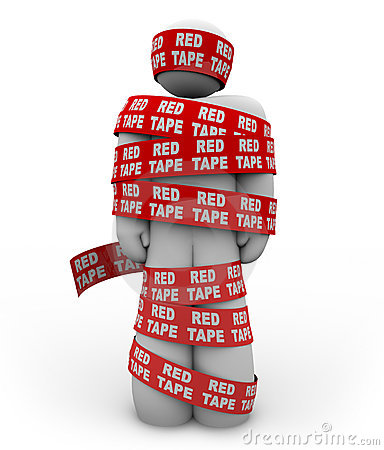In the first episode of ‘The Tail Wags The Dog And How!’ I had told you about the business end of the Navy being at sea; but, controlled by the ‘heads’ in headquarters who have specialised in dishing out detailed instructions on every conceivable subject. It is as if their efficiency is directly proportional to the number of reams of paper that they dish out.
All of us have been at both ends; but, we seem to forget our travails at sea the moment we are at headquarters.
Once, when I was the Command Communications Officer at Headquarters, Eastern Naval Command, Visakhapatnam, we were conducting an operation that involved shore based aircraft, ships and a small Seaward Defence Boat (SDB) in the Palk Bay. We had put all the craft at sea on a Common Fixed Net. Every SITREP (Situation Report) and every instruction was passed to everyone so that “everyone would be in the picture”. Good idea? Well, hours went by and we found that the SDB wasn’t reacting to any of the instructions that we had sent it. Series of meetings were held in the MOR (Maritime Operations Room; now MOC, ie, Maritime Operations Centre). In one of the meetings late in the night, the Chief of Staff asked me why was the SDB not responding to the volley of our instructions. My reply: “Sir, the SDB has received the messages but it has not decrypted them; we haven’t given it long enough pause when it can do so, what with a single communication operator on watch”.
If you think the communication gap between headquarters and units at sea is one way only, you are sadly mistaken. In every Command there is something called a Command Meeting that is held on quarterly basis in a year and hence called QCM or Quarterly Command Meeting . All Commanding Officers, Directors, and Officers-in-Charge attend the meeting together with Headquarters big-wigs, Fleet Staff and other concerned authorities ashore, for example, from Materiel Organisation and Naval Dockyard. For an agenda point to come up to the level of the QCM, it would have originated with the ships a few months ago. Out of all the points received, the Command Staff would select only those points that they consider significant points; this expression roughly translated into ‘points that they (the Command Staff) has some clue/answer about’. And yet, the decisions on most points after deep discussions at QCMs are that the points need to be deliberated further. At this stage, the C-in-Cs, seized with the desire to be seen pro-units-at-sea, direct that the concerned point be kept open until a solution is found.
Sometimes, the Command Staff would select a point so as to show-down a ship or unit that would have raised it. The ultimate idea would be to bring out how poorly informed the ship/unit would be in bringing out an unnecessary point for which the solution already existed within the resources already made available to the ship. Discussions on such points show the Command Staff being ahead of the genuine needs of the ship.
In one of the QCMs, I remember, one of the small missile-boats put up an agenda point that missile boats under refit should be given the services of a lighter transport so as to land defective motors, pumps etc at the various centres of the dockyard. After considerable discussion, the Commanding Officer was asked to specify the number of trips that such a lighter would be required for, render his report in a month’s time, so as to enable the Command Staff to arrive at a workable solution. I met the Commanding Officer during the tea-break and he was vowing never to put up an agenda point again.

The point is that the ‘heads’ at headquarters have the ship’s heads easily outnumbered and can beat them in discussions, debates, analyses and research on points. The ship’s staff who give these agenda points never learn this simple truth.
In one of the QCMs, a point was given by me that the Headquarters take a long time in responding to the points given by the ships and units. For some reason, the point was selected as an agenda point by the heads at the headquarters. The decision given was that there should be no issue from the ships that should be kept pending for more than a fortnight. Various colour schemes were worked out by the heads at the headquarters. If a solution is provided, it would be viewed as a Green issue. If it was kept pending for a month, it would be deemed as Amber issue. And if after a month, the response wasn’t given, it would be deemed as Red issue.
Excellent solution? Well, after six months of this colour scheme being in vogue, one fine day, I received an important mail from headquarters that read: “Your quarterly return of Red, Amber and Green issues not yet received; request expedite.” You can’t beat the heads at headquarters; people like afloat people who change overnight the moment they walk the corridors of headquarters.

I came across several exceptions to the rule too and these are the people who take it upon themselves to do something rather than write something. Let me give you three examples to tell you how easy is the former option. One of these was a Senior Staff Officer (Budget) at Headquarters, Western Naval Command. I visited him once with a hand delivered letter asking for a sanction under I & M Grant (Incidentals and Miscellaneous Grant) for buying office accessories. When I wanted to deliver the letter to one of the clerks in his office, the clerk asked me to deliver it personally to saab. Saab was a Captain and I was sure he’d take it amiss for an officer from subordinate unit seeing him directly for a petty matter. He had one look at it, went out with it to the clerk I had seen earlier, came back and got busy in phone calls and other office work. Fifteen minutes went by and I was feeling fidgety that my letter wasn’t receipted. Another ten minutes and I was now feeling totally depressed and told him that it doesn’t take that much time to give a receipt to a letter. At this juncture the clerk came in with a file on which my letter asking for sanction was there and – hold your breath – a sanction letter!
Another was Logistic Officer-in-Charge of the Naval Pay Office. Before retiring from the Navy in the year 2010, I phoned him about how long would it take for me to start receiving pension. He enquired whether I had completed the booklet of forms sent by Naval Headquarters and he would use my case as a test case for obtaining pension within a week. And he did. He is now a Flag Officer at Naval Headquarters. I rejoiced the day he was promoted.
I have dozens of these examples too.
However, for the vast majority, staff work, file-work, and need to be stickler to rules and regulations keep the tail wagging the dog.
This majority has an answer to every problem of yours in the form of yet another detailed instructions.
